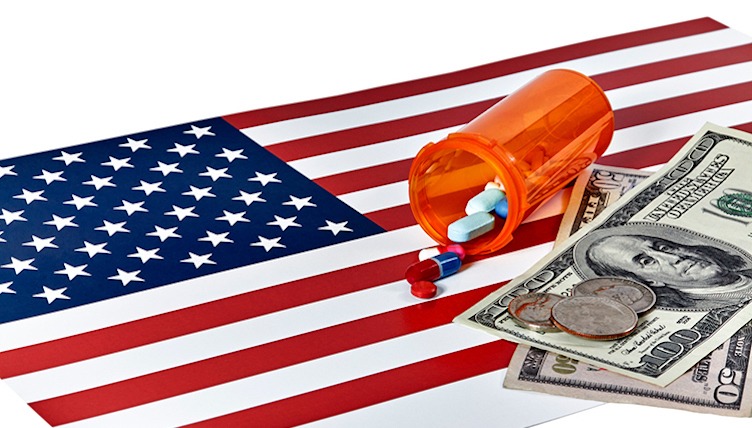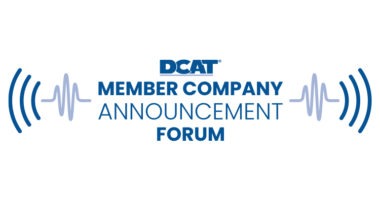Changing Fortunes for US Retail Medicine Spending
Retail medicine spending in the US grew only 1.3% in 2016, down from 9% in 2015, according to a recent analysis by the US Centers for Medicare & Medicaid Services, which annually produces projections of healthcare spending in the US. So how does that compare with overall healthcare spending, and what are projections for 2018 and beyond?
All major payers (Medicare, Medicaid, and commercial health plans) experienced slower retail medicine spending growth in 2016, according to the report. In seven of the last 10 years, data show that retail medicine spending growth has been below total health spending growth. Looking ahead, prescription drug spending in the US is projected to grow an average of 6.3% through 2025. DCAT Value Chain Insights examines the numbers.
Inside the numbers
A recent blog post (December 12, 2017) from the Pharmaceutical Research and Manufacturers of America (PhRMA), the industry trade group representing the large, innovator, research-based pharmaceutical companies, highlighted some key data as it related to prescription drug spending in the US overall and in comparison to overall healthcare spending.
The Office of the Actuary in the Centers for Medicare & Medicaid Services annually produces projections of healthcare spending for categories within the National Health Expenditure Accounts (NHEA), which track health spending by source of funds (for example, private health insurance, Medicare, Medicaid), by type of service (hospital, physician, prescription drugs, etc.), and by sponsor (businesses, households, governments). The latest projections go through 2025. The NHEA are the official estimates of total healthcare spending in the US, with the latest available data being from 2016.
Retail medicine spending grew just 1.3% in 2016, down from 9% in 2015, according to the NHEA and as cited by PhRMA. To put that in context, total spending for hospitals grew more than 3.5 times that amount. PhRMA also cited other data to put prescription drug spending in context of overall healthcare spending. Total patient out-of-pocket spending grew 3.9% in 2016, the fastest in a decade. Total spending for hospitals grew 4.7% to $49 billion in 2016. Total spending for physician and clinical services grew 5.4% to $664.9 billion. All major payers (Medicare, Medicaid and commercial health plans) experienced slower retail medicine spending growth in 2016. In seven of the last 10 years, NHEA data shows that retail medicine spending growth has been below total health spending growth.
Prescription drug spending as part of overall healthcare spending
Prescription drugs account for approximately 10% of overall healthcare spending in the US, with spending on hospital care and physician and clinical services, accounting for more than half (52%) of total healthcare spending in the US, according to the NHEA. US healthcare spending increased 4.3% to reach $3.3 trillion, or $10,348 per person in 2016, according to data from the NHEA. Healthcare spending growth decelerated in 2016 after the initial impacts of the Affordable Care Act (ACA) coverage expansions and strong retail prescription drug spending growth in 2014 and 2015. The overall share of gross domestic product (GDP) related to healthcare spending was 17.9% in 2016, up from 17.7% in 2015.
The largest percentage portion of healthcare spending in the US in 2016 was from hospital care, which accounted for 32% of spending. Spending for hospital care increased 4.7% to $1.1 trillion in 2016, slower than the 5.7% growth in 2015, according to the NHEA analysis. Physician and clinical services accounted for 20% of healthcare spending in the US in 2016 and increased 5.4% to $664.9 billion in 2016. Although growth for physician and clinical services decelerated slightly in 2016 from 5.9% in 2015, it outpaced the growth in all other goods and services categories. The growth in the use and intensity of physician and clinical services was a driving factor in the overall growth in physician and clinical services, accounting for nearly three-quarters of the 5.4% increase, according to the NHEA analysis.
Prescription drugs accounted for 10% of healthcare spending in the US in 2016. Growth in retail prescription drug spending in the US slowed in 2016, increasing 1.3% to $328.6 billion. The slower growth in 2016 followed two years of strong growth in 2014 and 2015, 12.4% and 8.9%, respectively. This strong growth reflected increased spending on new medicines and price growth for existing brand-name drugs, particularly for drugs used to treat hepatitis C, according to the NHEA analysis. Growth slowed in 2016 primarily due to fewer new drug approvals, slower growth in brand-name drug spending as spending for hepatitis C drugs declined, and a decline in spending for generic drugs as price growth slowed.
The remaining breakdown in US healthcare spending in the US in 2016 was as follows: other professional services, such as physical therapy, optometry, podiatry, or chiropractic medicine 3% share or $92.0 billion; dental services, 4% share or $124.4 billion; other health, residential, and personal care services , 5% share or $173.5 billion; home healthcare, 3% share or $92.4 billion; nursing care facilities and continuing care retirement communities, 5% share or $162.7 billion; durable medical equipment, such as contact lenses, eyeglasses and hearing aids, 2% share or $51.0 billion; and other non-durable medical products, such as over-the-counter medicines, medical instruments, and surgical dressings, 2% share or $62.2 billion.
On a funding level, government-based healthcare accounted for 37% of total US healthcare spending in 2016, private health insurance, 34% and out-of-pocket expenses 11%. In terms of US government spending on healthcare, Medicare accounted for 20% of overall healthcare spending or $672.1 billion in 2016, and Medicaid accounted for 17% of total healthcare spending in the US in 2016 or $565.5 billion. Private health insurance accounted for 34% of total US healthcare spending or $1.1 trillion in 2016. Out-of-pocket expenses accounted for 11% or $352.5 billion, according to the NHEA data. In terms of sponsors, in 2016, the federal government and households accounted for the largest shares of spending (28%) followed by private businesses (20%), and state and local governments (17%). The type of sponsor is defined as the entity that is ultimately responsible for financing the healthcare bill, such as private businesses, households, and governments. These sponsors pay health insurance premiums and out-of-pocket costs, or finance healthcare through dedicated taxes and/or general revenues.
Looking ahead
How will overall healthcare spending, including for prescription drugs, fare in 2018 and beyond. Based on projections made from 2016 through 2025, the NHEA projections show that national healthcare spending is projected to grow at an average rate of 5.6% per year through 2025 and 4.7% per year on a per-capita basis. Throughout the 2016-25 projection period, growth in national health expenditures is driven by projected faster growth in medical prices (from historically low growth in 2015 of 0.8% to nearly 3% by 2025). This faster expected growth in prices is partially offset by projected slowing growth in the use and intensity of medical goods and services. Healthcare spending was projected to grow 5.4% in 2017 related to faster growth in Medicare and private health insurance spending. Healthcare expenditures are projected to grow at an average rate of 5.9% for 2018-19, as projected spending growth in Medicare and Medicaid accelerates.
Prescription drug spending growth in the US is expected to peak in 2018 at 7.6% as relatively fewer brand-name drugs are expected to lose patent protection and the downward price pressure typically associated with the introduction of generic substitutes is somewhat mitigated, according to NHEA data. Prescription drug spending is projected to grow an average of 6.3% through 2025 as the influence on spending from the coverage expansions and newly approved specialty drugs is expected to fade after two years of above-average impacts seen in 2014 and 2015. In 2018, the NHEA data project that prescription drug spending in the US at $387.4 billion, $412.3 billion in 2019, and $438.2 billion in 2020. Over the ensuing five years, projections for prescription drug spending in the US are $465.8 billion in 2021, $495.7 billion in 2022, $527.5 billion in 2023, $561.2 billion in 2024, and $597.1 billion in 2025.





